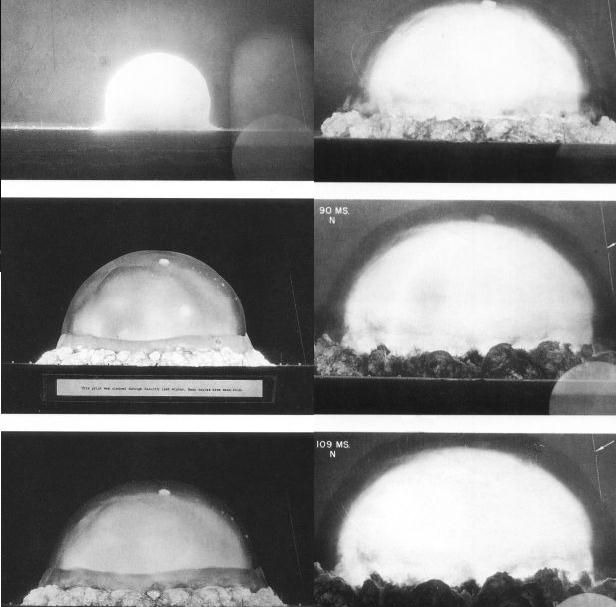This is your morning Open Thread. Pour your favorite beverage and review the past and comment on the future.
Find the past “On This Day in History” here.
Click on images to enlarge
July 23 is the 204th day of the year (205th in leap years) in the Gregorian calendar. There are 161 days remaining until the end of the year.
THE GREAT COMET OF 1997. Above, the bright head of comet Hale-Bopp, called the coma, is pointed towards the Sun. The coma is composed of dust and gas, masking the solid nucleus of the comet made up of rock, dust and ice. Photo taken by Jim Young at NASA’s Jet Propulsion Laboratories Table Mountain Observatory in March 1997.
The comet was discovered in 1995 by two independent observers, Alan Hale and Thomas Bopp, both in the United States. Hale had spent many hundreds of hours searching for comets without success, and was tracking known comets from his driveway in New Mexico when he chanced upon Hale-Bopp just after midnight. The comet had an apparent magnitude of 10.5 and lay near the globular cluster M70 in the constellation of Sagittarius. Hale first established that there was no other deep-sky object near M70, and then consulted a directory of known comets, finding that none were known to be in this area of the sky. Once he had established that the object was moving relative to the background stars, he emailed the Central Bureau for Astronomical Telegrams, the clearing house for astronomical discoveries.
Bopp did not own a telescope. He was out with friends near Stanfield, Arizona observing star clusters and galaxies when he chanced across the comet while at the eyepiece of his friend’s telescope. He realized he might have spotted something new when, like Hale, he checked his star maps to determine if any other deep-sky objects were known to be near M70, and found that there were none. He alerted the Central Bureau of Astronomical Telegrams through a Western Union telegram. Brian Marsden, who has run the bureau since 1968, laughed, “Nobody sends telegrams anymore. I mean, by the time that telegram got here, Alan Hale had already e-mailed us three times with updated coordinates.”
The following morning, it was confirmed that this was a new comet, and it was named Comet Hale-Bopp, with the designation C/1995 O1. The discovery was announced in International Astronomical Union circular 6187.




 On this day in 1848, a two-day
On this day in 1848, a two-day  Roosevelt was born January 30, 1882, in Hyde Park, New York, and went on to serve as a New York state senator from 1911 to 1913, assistant secretary of the Navy from 1913 to 1920 and governor of New York from 1929 to 1932. In 1932, he defeated incumbent Herbert Hoover to be elected president for the first time. During his first term, Roosevelt enacted his New Deal social programs, which were aimed at lifting America out of the Great Depression. In 1936, he won his second term in office by defeating Kansas governor Alf Landon in a landslide.
Roosevelt was born January 30, 1882, in Hyde Park, New York, and went on to serve as a New York state senator from 1911 to 1913, assistant secretary of the Navy from 1913 to 1920 and governor of New York from 1929 to 1932. In 1932, he defeated incumbent Herbert Hoover to be elected president for the first time. During his first term, Roosevelt enacted his New Deal social programs, which were aimed at lifting America out of the Great Depression. In 1936, he won his second term in office by defeating Kansas governor Alf Landon in a landslide.



Recent Comments